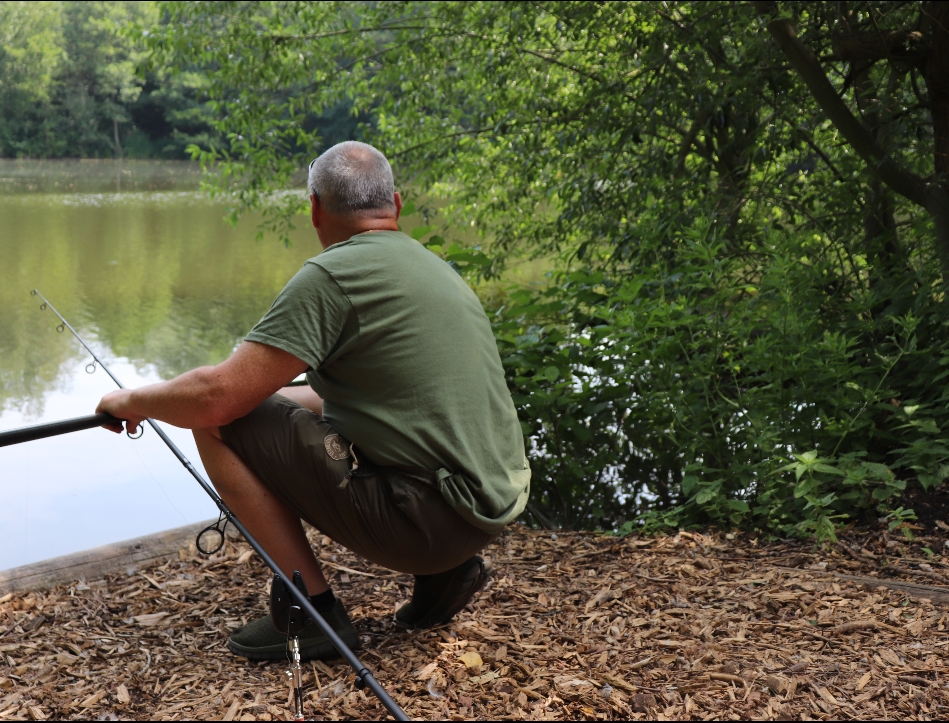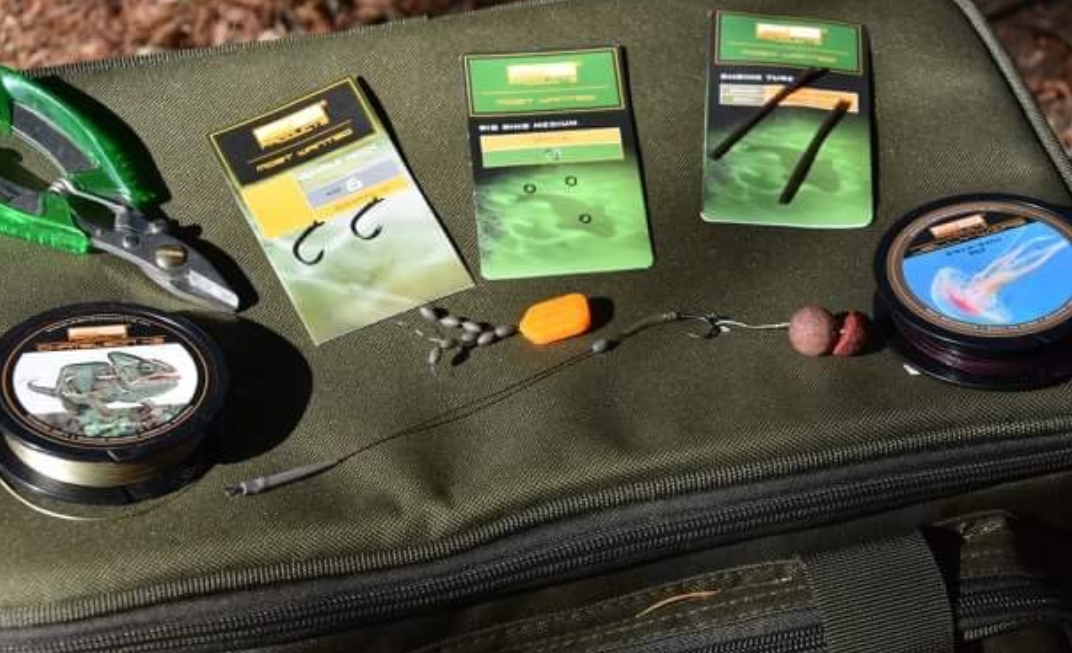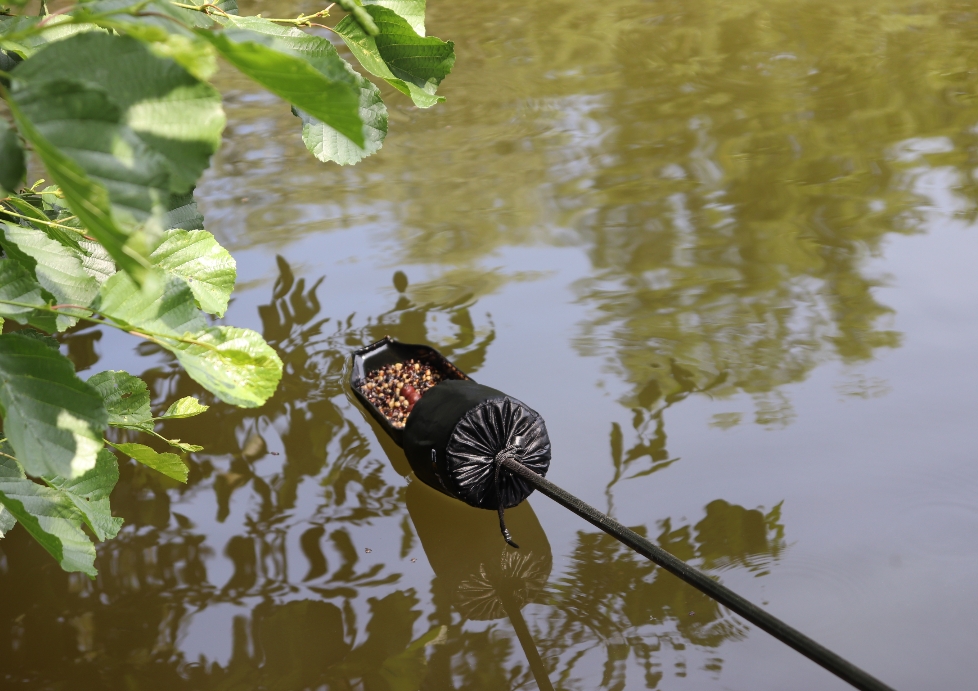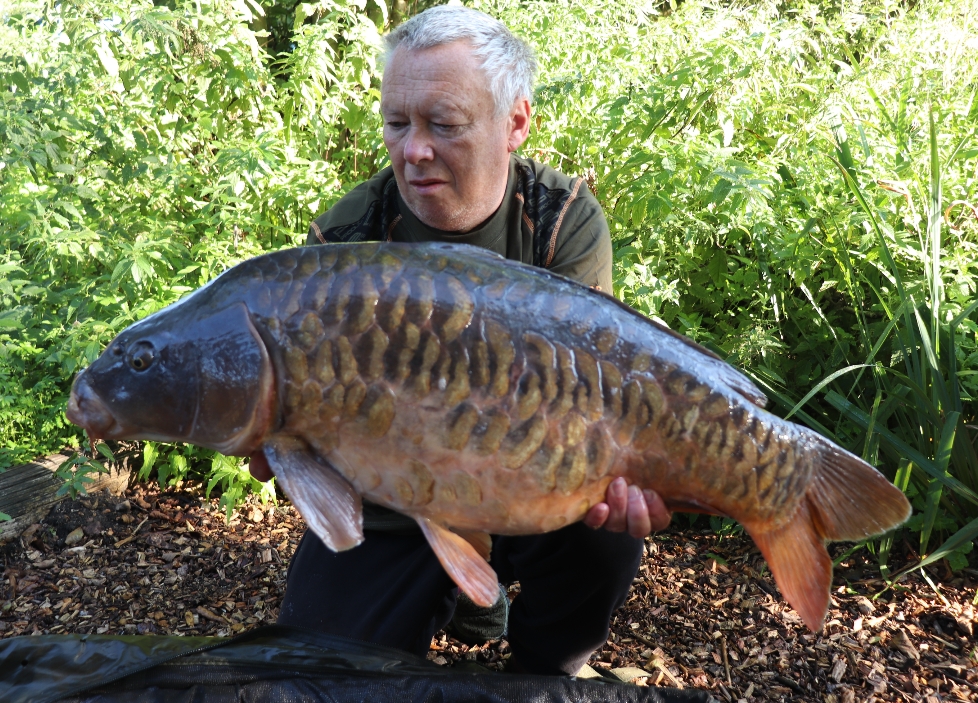It’s amazing how many anglers never fish the margins on busy and pressurised lakes. Anglers are happy to fish island margins or far banks and get as tight as they can, but close in they tend to ignore these areas. You can of course catch fish way out but if you do you are likely to be missing a trick. I would say a majority of my big carp have been caught at no more than a rods length out from the bank. There are so many advantages of catching carp close in. With careful presentation, feeding and accuracy, margin fishing is an exciting way off catching carp. If you fancy trying this method, here are my tips on how you can capitalise on catching carp consistently, from no more than 10 metres out from your chosen swim.

1 Location is key
When arriving at the lake, the first thing to do is to walk around and look at potential swims. You need to be looking out for signs of fish and choosing the swim that you feel with be the most productive. I take into account where other anglers are fishing and I try to establish where the pressure is on the lake. I am happy to walk around the lake as long as it takes to make this decision. I also tend to watch ducks and coots diving for food to see if they spook or suddenly move away from a margin, as this is a clear indication that fish are present. This has been particularly good for me on larger waters.
Another tip is to look for fry in the margins as they too spook very easily when large fish are around and carp do love to eat fry. Swims that don’t often get fished are great margin swims, as the carp see these as safe areas. Norfolk reeds along the margin are terrific spots in winter and early spring and can be ideal for close in fishing .When the winter sun is on the reeds, I will approach these areas, keeping myself very low to the ground and out of sight. You will often find that the carp will be lying right in among the reeds in shallow water. When it comes to larger waters I am amazed why margins are so neglected as I have found the carp are really keen in these spots and are much easier to catch. In my opinion this happens because the carp feel safe in these undisturbed, quiet places. Only recently I walked a 390-acre pit and found carp taking freebies while I observed from up a tree with no fear of detection. With waters like these I try and use the undergrowth to conceal myself, just poking the tip of the rod out.
Super tactic
Working parties are an excellent way to find those special margin spots. If there is a working party I always volunteer straight away. Last winter I worked with the owner of Badgers Holt, Simon Mansbridge. I walked 80 percent of the margins and found some new hotspots that I had never thought to put a bait in before,even though I have fished this lake for over 10 years . I went back in May and asked Simon if anyone had fished these spots this year and they hadn’t been touched. I then fished these same spots for 36 hours and picked up 10 carp, including a koi that very rarely comes out. I found this spot while cutting bushes on the dam wall. I also discovered the fish have to feed so tight into the margin they actually created a trough. I used a photograph of the spot and so I had a note of the exact area to place the rig.
If you are doing these a rake is brilliant to use for the cleaning of the area, plus to get rid of the twigs and leaves for a perfect presentation. What really amazes me I can wade and create a disturbance and after a couple of hours carp often come back and investigate and feed on the areas that have been disturbed. I also caught a forty in England using very similar tactics but this time removed some weed to create a spot. I put in a few balls of Mainlinebaits hybrid groundbait with chops boilies and whole boilies soaked in Multi-stim. I did not put a baited rig in for 6 hours and merely observed. Within twenty minutes a forty-pound common is on the bank.
Swim chosen
Once I have chosen my swim I place a bucket in the swim and put some freebies in the area I am going to place my rigs. The carp can then feel confident to feed there while I am preparing to start fishing. This gives me time to get the rest of my tackle and take my time. Don’t be tempted to hurry as this could certainly ruin your session, patience is the essence.
All the bait is prepared by my van, so I can set up and not create too much movement in the swim.
When back at the swim I put a little bit more bait in just to keep the carp happy and I slowly set up.
Setting up
Once you have decided on your swim stealth, is the key. My bivvy is set well back from the swim and I use the bushes or reeds to conceal me. Be as quiet as you can be. Everything is organised way back from the swim so less disturbance. When placing my rods these are situated so I have the tips at the edge and my line lay starts right at the edge as well. With regards rod butts, I am really fussy. I use the bank bugs mk 2 butt rests as they can be angled for perfect position.
Unless the weather is appalling I don’t fish with the front of my bivvy on so I can hear and see movement of the water. This is superb at night , especially if you are lucky enough to get a mid-sixty feeding in two feet of water with its tail appearing every now and then.
Make sure the brolly or bivvy is out of sight and way back from the swim
Presentation
When it comes to line I always use floro for my margin fishing. This means the line is on the deck as I do not like using back leads with slack lines . The rods, I like to keep on individual bank sticks as this gives perfect bite indication and keeping tight to some obstructions gives me the advantage over the carp. Always clean your line as it picks up particles from the floor and this helps to protect and stop your line looking like rope.
When it comes to rigs if the bottom is clean I always like to use bottom bait rigs but probably where my tactics differ is I use very long hairs up to 52mm in length. The hair is also different material to my hook length as I use a very soft braid material. Hook length wise I like to use PB jelly wire which is excellent for these situations. The rig is only 127 mm in length and tied very similarly to a multi rig but the loop is fixed onto the hook under some shrink tubing. If necessary I can easily change this rig to a pop up. The rig is pinned down with some rig putty. Now most of the lakes I fish ban leaders I am happy to fish waters with tungsten tubing, PB hit and run clips and with a 2.5 oz. coated square lead from Frankleads. My hook choice is a wide beaked as again most hooks have to be barbless.
As I use a long hair, I always put a pva nugget on the rig to stop the hair being tangled.

Bait placement
My favourite way off placing a bait is with a baited spoon .My preference being the 16 mm long variety as this can really put my rig in some great little places such as tight to pads or underneath bushes. This proves more effective than using a under arm cast as I could catch the bushes and ruin my session.
The pole is an awesome way to place bait as well as I like to have the feed tight to my hookbait.
Another way I like to place my bait is the use of chest waders and often in this scenario as I said previously, I rake an area and fill it with hemp and other particles like maples. I then put a small popup over the top. This is a great method for catching those wary, and inquisitive carp.
You can see from these descriptions that a perfect presentation takes a little time but gives you the confidence to leave your bait knowing its exactly right.
I also do not touch it until I get a take or if I think a carp has played around with the rig. Often, I have had takes from big fish up to 36 hours after the rig being placed.

Tight line or slack
When it comes to setting the indicators if I am fishing under trees and there is no way a fish will get snagged then slack lines is the order of the day. If there are snags or very heavy areas of pads then my rods are locked up and fished at a slight angle. If you feed correctly you will always be able to land fish safely. Never fish snags or pads knowing that the carp will get snagged or tethered. Carp cannot resist feed when they are confident so you can pull them out of their safe places where they will eventually make a mistake.
Short Session Margin Stalking
This is tactic I love. It involves using the water birds to find and help me get a bonus carp. Park lakes are excellent for this, where the public like to feed the ducks. I find a quiet area and start to feed hemp and slow sinking bread and watch the coots dive for the bait. The lake I fish, has a floating bait ban so this is a good way to catch. You either see the birds move off or the water boils and fizzes. This is when I put a nice juicy lob worm down and the carp just can’t seem to resist. As it slowly drops takes can be very quick. This method has worked for me so many times.

I believe these tactics are excellent so I suggest you have a go and I am sure you will land some hard fighting carp.
Keith Williams

